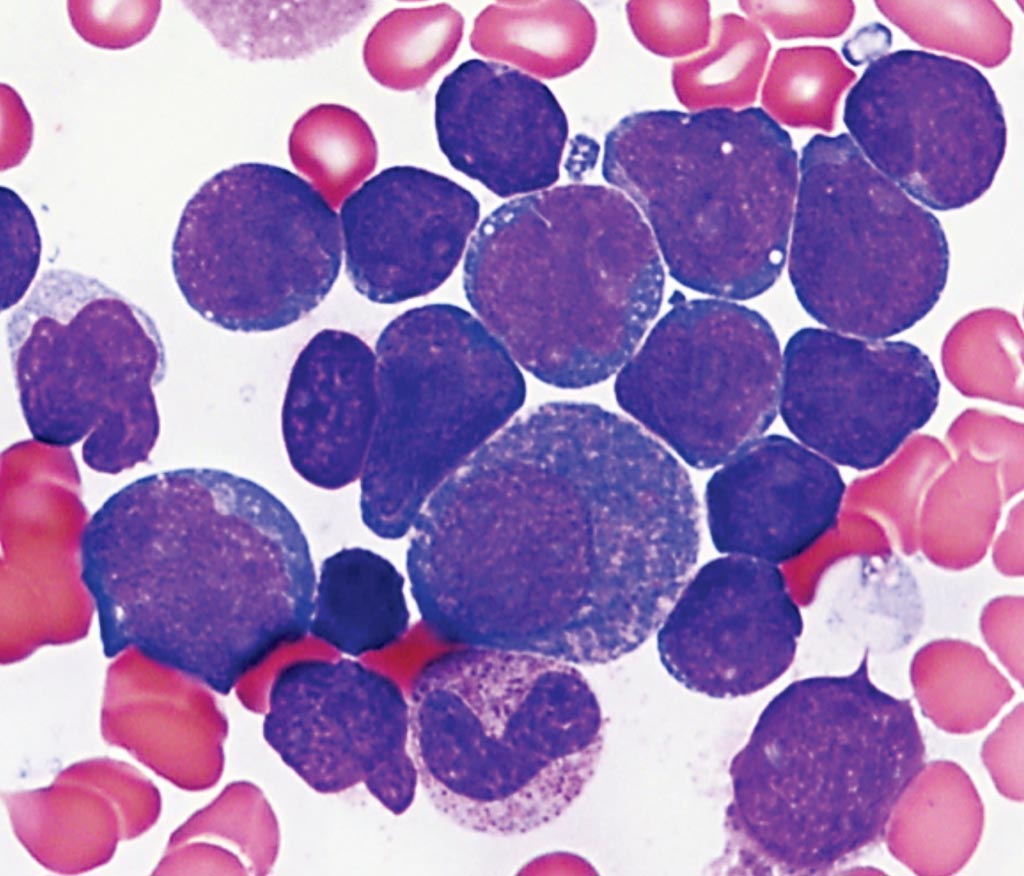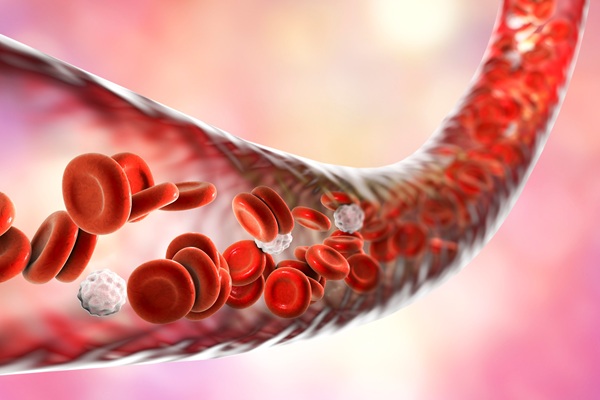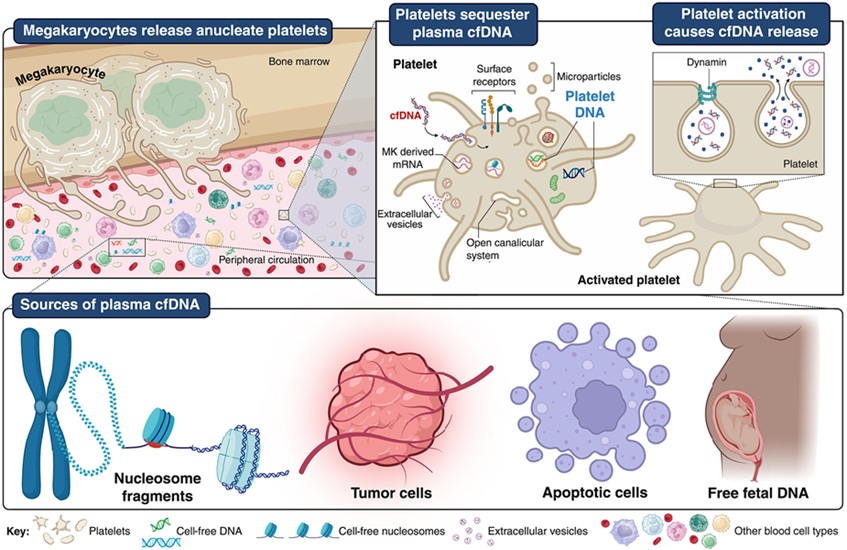Next-Gen Test Authorized for Minimal Residual Disease
By LabMedica International staff writers
Posted on 17 Oct 2018
An estimated 6,000 people in the USA will be diagnosed with acute lymphoblastic leukemia (ALL) and 31,000 people will be diagnosed with multiple myeloma this year.Posted on 17 Oct 2018
In patients with these diseases, Minimal Residual Disease (MRD) is a metric for gauging how many cancer cells remain in their bone marrow after treatment, which can be indicative of their response to treatment and extent of their remission. Currently, MRD is measured using flow cytometry assays or polymerase chain reaction (PCR)-based assays, which can pick up 1 in 10,000 or 1 in 100,000 cells.

Image: Bone marrow aspirate of a patient with acute lymphoblastic leukemia revealing increased blasts which are small to medium in size with high nuclear-to-cytoplasmic ratios, round to irregular nuclei, smooth chromatin, and scant basophilic agranular cytoplasm. Some background maturing myeloid cells are also present in this case (Photo courtesy of Dr. Karen M. Chisholm).
The US Food and Drug Administration (FDA, Silver Springs, MD, USA) authorization of clonoSEQ (Adaptive Biotechnologies, Seattle, WA, USA) was based on retrospective analysis of three studies that together involved samples from 273 ALL patients and more than 1,000 multiple myeloma patients. ALL patients who were MRD negative had longer event-free survival (the time after treatment that a patient is free of complications or other events), while those with higher MRD results had lower event-free survival rates.
ClonoSEQ was used to demonstrate that MRD was similarly associated with progression-free survival, the amount of time during and after treatment that a patient's disease does not get worse and disease-free survival, the length of time after primary cancer treatment that a patient does not have any signs of that cancer. The clonoSEQ Assay leverages the power of immunosequencing coupled with groundbreaking advances in chemistry and proprietary bioinformatics to assess the presence of malignant cells at levels below the detection limit of conventional cytomorphological methods. When a sufficient sample is provided, the assay can routinely identify the presence of one cancer cell in a sample of one million healthy cells.
Related Links:
US Food and Drug Administration
Adaptive Biotechnologies













